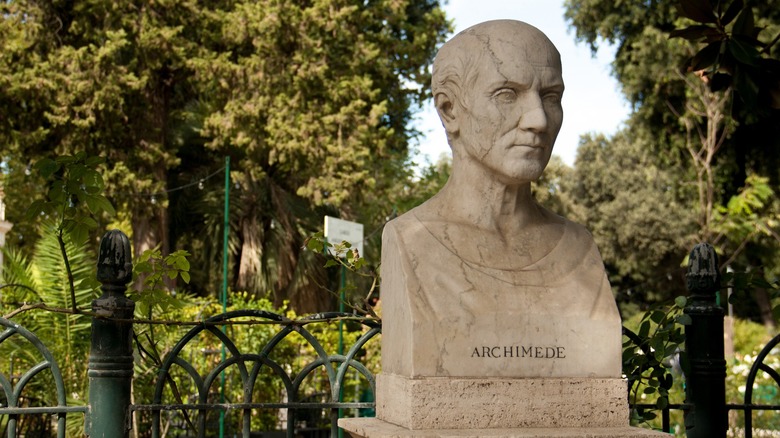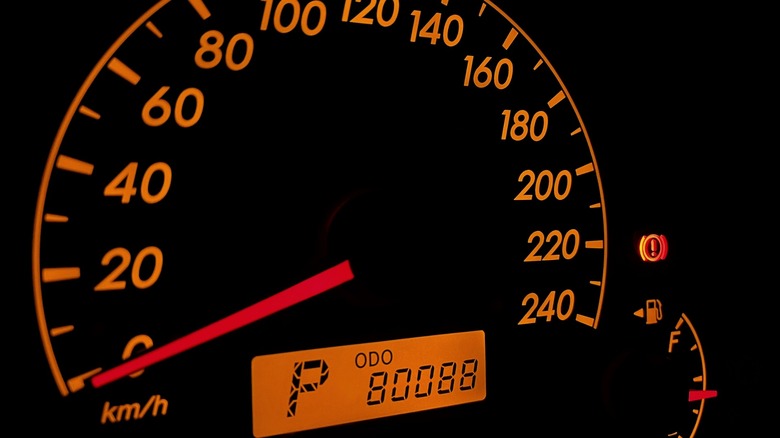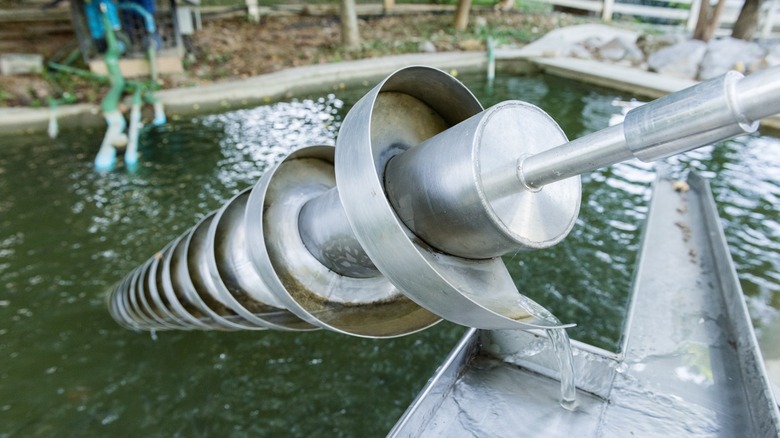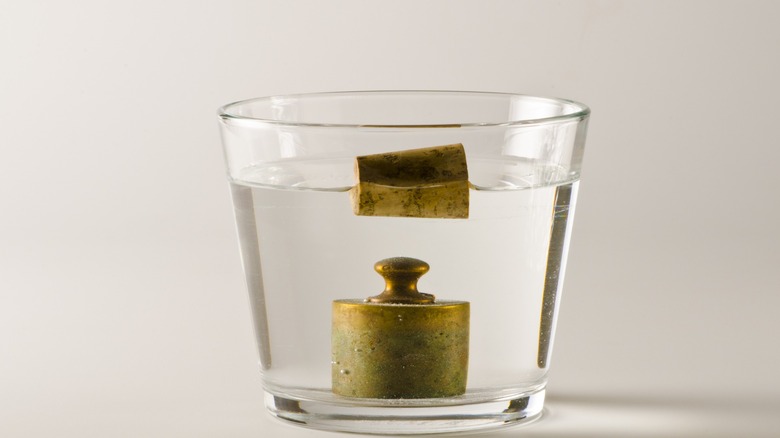4 Archimedes Inventions That Can Still Be Seen In Modern Engineering
Pick a point in time — any random point in the world's history — and you'll likely be able to find some sign of genius. Brilliant minds have speckled generations past, providing their people with inventions that simplified life and contributed to the advancement of mankind. Some minds, like that of third century B.C mathematician, astronomer, and inventor Archimedes of Syracuse, inadvertently left a blueprint that modern marvels picked up on and adopted into their engineering feats.
Though Archimedes may have passed during the siege of Syracuse, his legacy has long outlived him and become the basis for many applications that we still use today. While there are tales of fantasy and myth we could tout, like the controversial burning mirrors historians still debate over today, there are real, verifiable inventions attributed to Archimedes that we still see traces of in the modern world.
Through these four inventions bred from Archimedes' genius, we enjoy conveniences that otherwise, very likely wouldn't exist.
The Odometer
If you need a better understanding of just how advanced Archimedes was, consider the odometer. The digital readout on your vehicle has a fairly important purpose today, allowing you to keep track of the mileage on your car to determine when it needs maintenance, such as routine oil changes and tire rotations. However, that device has its roots in an age where the mechanics of vehicular transportation were a steed and two wheels.
Archimedes really enjoyed gear systems, and one of his most important allowed riders to gauge the distance they traveled, setting the framework for the modern odometer. The simple system included a single-toothed gear, a larger gear with hundreds of teeth, and small stones. When the smaller gear completed one revolution, it moved the larger gear, which dropped a stone into a box.
Knowing how long it would take for the smaller gear to complete a rotation, at the end of a ride, each stone dropped would represent that distance traveled. In Hero of Alexandria's construction of the device, first mentioned in chapter 34 of his "Dioptra", a revolution was one Roman mile, or 1,480 meters. If 50 stones dropped, then the chariot would have traveled 74,000 meters or just under 46 miles.
Though Roman architect Vitruvius described such a device somewhere between 27 and 23 B.C., it's still believed Archimedes was the pioneer of its design during the First Punic War.
The Compound Pulley
Archimedes' life is riddled with tales that seem fantastical, one of the most fascinating being that of the Syracusia. Said to be the largest transport ship for its time and many generations after, though its dimensions are oft-debated, the vessel was too big to be drawn out to sea as a traditional ship would. So, Archimedes was said to have employed a pulley system that lifted the ship out of its dock.
While the Syracusia was a marvel of its own, the really impressive engineering was the pulley system, another invention of Archimedes. Pulley systems are quite prevalent today, used in pretty much the same fashion as Archimedes used to lift the massive ship. The block and tackle pulley uses a system of pulleys to reduce the amount of force needed to lift an object.
Say you have a 50-pound crate you need to lift. By using only one pulley, you still have to exert 50 pounds of force to pull that crate upward. However, in Archimedes' model, if a second pulley is added, the force needed is halved as the second pulley anchored to the ceiling holds half the weight.
Believe it or not, Archimedes' invention is actually used in cars today, specifically in CVT transmissions that use a two-pulley system to support continuously shifting gears. Pulleys are also used to move theater curtains, lift heavy materials at job sites like docks and oil rigs, and in exercise equipment.
The Archimedes Screw
Though this gravity-defying, water-raising device is purportedly much older than Archimedes, having been widely credited to the technologically impressive Egyptians, the Syracusian's name is still often associated with it.
The Archimedes' screw remains virtually unchanged in modern applications. The screw was designed to raise water from one source and deposit it into another. Lore states that King Hiero II of Syracuse wished to have a means of removing rainwater from his ship. He called upon the famed inventor, who devised a system that used a large helix inside of a pipe. While that may be true, one can't ignore the screw's application in Babylon as a means of delivering water to the hanging gardens.
Held at a 45-degree angle with the lower end of the pipe and helix submerged in water, the screw allowed water to be transported upward, defying gravity. At the dry end of the helix, the user rotates a lever that moves the helix in such a way that lifts the water through the pipe to be deposited on the opposite end.
Wastewater treatment plants still use this method today, and outside of the materials used, not much has changed. The helix is still used to transport wastewater and its debris while minimizing the risk of clogging.
Archimedes Principle
Of course, Archimedes didn't invent the concept of hydrostatic pressure, or the relationship between fluid pressure, fluid density, fluid depth, and gravity. However, his understanding of how fluid is displaced by an external force became an integral part of many industries millennia later. In simple terms, Archimedes' Principle explains that the weight of a displaced fluid is directly proportional to its volume.
Archimedes' study of the properties of fluids is still prevalent today and is practically the basis behind the submarine. The ballast tank of a submarine is what dictates the vessel's buoyancy, or the upward force of a fluid (in this case water) against the weight of an object that allows it to stay afloat.
When the tank is filled with water, its buoyancy decreases, causing it to sink, but only to the point where there is an equilibrium of pressure within and surrounding the ship. When the ballast tank is emptied, compressed air is released into the tank, forcing water out. This decreases its hydrostatic pressure of the submarine, which increases its buoyancy, allowing it to rise to the surface.
Other applications you can apply Archimedes' Principle to include meteorology, geology and gemology, specifically when discussing potential hurricane strength, particle volume during volcanic eruptions, and the weight of gold.




